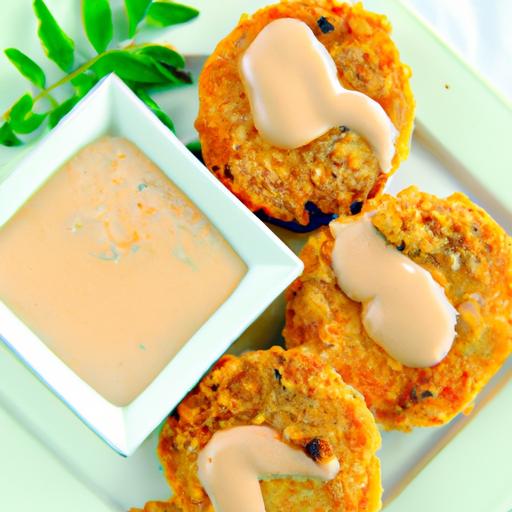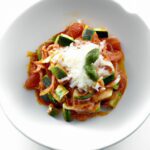When it comes to achieving the perfect golden crunch on your favorite fried delights, batter cooking is nothing short of a culinary science experiment sizzling in your own kitchen. Behind every crispy edge and tender, airy bite lies a fascinating interplay of chemistry and heat – a speedy sizzle that transforms simple ingredients into irresistible textures and flavors. In this article, we’ll peel back the curtain on the secrets of batter cooking, exploring the why’s and how’s of temperature, ingredient ratios, and cooking times that turn everyday batters into crispy masterpieces. Get ready to dive into the science behind the sizzle and elevate your frying game with insights that make every bite a triumph of technique.
The Science Behind Batter Cooking: Speedy Sizzle Secrets
The Science Behind Batter Cooking: Speedy Sizzle Secrets unlocks the mystery of how heat transfer transforms a simple batter into a perfectly crisp and golden delight. Whether you’re whipping up tempura vegetables or classic fish and chips, understanding the role of thermal dynamics alongside batter chemistry can revolutionize your frying technique. Let’s dive into a culinary journey where sizzle speed marries texture for the ultimate crispy bite.
Prep and Cook Time
- Preparation: 15 minutes
- Cooking: 10 minutes
- Total Time: 25 minutes
Yield
Serves 4 crispy-enthusiasts
Difficulty Level
Medium – Perfect for home cooks ready to elevate their frying skills
Ingredients
- 1 cup all-purpose flour, sifted
- 1/2 cup cornstarch
- 1 teaspoon baking powder
- 1 teaspoon kosher salt
- 1 cup ice-cold sparkling water
- 1 large egg, lightly beaten
- Vegetable oil for deep frying (enough for 2-3 inches depth)
- Optional: spices (paprika, garlic powder) for flavoring
Instructions
- Prepare your batter: In a large bowl, mix the sifted flour, cornstarch, baking powder, and salt. Slowly whisk in the ice-cold sparkling water and egg until just combined – the batter should be slightly lumpy but fluid enough to coat.
- Preheat your oil: Heat vegetable oil in a deep fryer or heavy pan to 360°F (182°C). Use a thermometer to monitor temperature precisely-this ensures the ideal sizzle speed and prevents sogginess.
- Test the batter: Drop a small spoonful into the oil. It should float up quickly with an immediate crisp sizzle. If the batter browns too fast, lower the heat slightly; if it sinks or absorbs oil, it’s too cool.
- Coat and fry: Dip your desired ingredient (fish, vegetables, or tofu) into the batter, allowing excess to drip off. Carefully place into hot oil, frying in batches to avoid overcrowding.
- Cook to golden perfection: Fry for 2-4 minutes depending on size-flip once, if necessary. Look for an evenly golden crust that crunches on the first bite.
- Drain and rest: Remove with a slotted spoon and rest on a wire rack or paper towels. This prevents steam from softening the crust.
Chef’s Notes
- Cold batter is key: The colder the batter, the slower gluten forms, resulting in a tender yet crisp crust.
- Balance is everything: Too thick and the batter won’t crisp quickly; too thin and it absorbs oil. Aim for a smooth but slightly thick consistency (like heavy cream).
- Oil temperature fluctuations: Maintain heat between 350-375°F. Too hot burns the crust; too cool makes it greasy.
- Flavor boosters: Integrate spices like paprika or garlic powder directly into the dry mix for a subtle aroma.
- Advance prep: Make your dry mix in advance; just add cold liquids and egg before frying to keep batter fresh.
The Science Behind Batter Cooking: Speedy Sizzle Secrets in Action
Understanding heat transfer and oil temperature enables rapid cooking while developing flavors through Maillard reactions-the same chemical browning that gives golden batter its irresistible taste. The rapid sizzle seals the surface, locking moisture inside, resulting in crispy textures paired with succulent fillings.
Serving Suggestions
Serve your crispy creations nestled on a bed of fresh greens with a drizzle of zesty aioli or tangy lemon-infused mayo. For an eye-catching finish, garnish with freshly chopped herbs like cilantro or chives, and a sprinkle of flaky sea salt to heighten flavor. Pair with a crisp white wine or a cold craft beer to complement the batter’s golden crunch.
| Nutrient | Per Serving |
|---|---|
| Calories | 320 kcal |
| Protein | 8 g |
| Carbohydrates | 35 g |
| Fat | 15 g |

For deeper insight into the chemistry of frying, check our comprehensive frying techniques article. Additionally, food science authority Exploratorium’s Frying Science offers excellent resources to expand your knowledge.
Q&A
Q&A: The Science Behind Batter Cooking: Speedy Sizzle Secrets
Q1: What makes batter sizzle so quickly when it hits a hot pan?
A1: The rapid sizzle is all about the water content in the batter meeting the hot cooking surface. When water molecules instantly vaporize into steam upon contact with heat, they create tiny bubbles that dance and pop, giving you that signature sizzling sound. This flash evaporation also helps cook the batter’s exterior faster, forming a crisp, golden crust.
Q2: How does temperature influence the cooking speed of batter?
A2: Temperature is the secret speed dial of batter cooking. Higher heat accelerates the Maillard reaction-a chemical ballet where proteins and sugars brown and flavor molecules multiply-browning the batter swiftly while locking in moisture. However, too high a temperature risks burning the outside before the inside cooks through, so mastering just-right heat is key.
Q3: Why does some batter puff up while cooking, and what causes those little bubbles?
A3: Puffiness comes from steam trapped inside the batter and air pockets from leavening agents like baking powder or soda. As the batter heats, trapped gases expand, pushing the batter upwards. The little bubbles you see are pockets of steam or carbon dioxide escaping, helping create that light and airy texture.
Q4: Does the type of flour affect how fast the batter cooks?
A4: Absolutely! Flours differ in protein content, which influences gluten development and moisture absorption. A high-protein flour can create a stronger batter structure, slowing down moisture evaporation and slightly extending cooking time. Conversely, lighter flours can result in a quicker, crispier finish because they release moisture faster.
Q5: How does oil or fat content impact the cooking process and final texture?
A5: Oil acts as a heat conductor and moisture barrier, sizzling batter to a tantalizing crispness. It raises the cooking temperature at the surface, allowing faster browning, while also preventing sticking and promoting even heat distribution. Fat also tenderizes the batter by coating proteins, giving the finished product a pleasingly soft interior beneath that crunchy crust.
Q6: Can the mixing method influence the speed and texture of cooking batter?
A6: Yes! Vigorous mixing introduces more air, resulting in a fluffier batter that cooks faster thanks to those air pockets acting as heat conduits. Overmixing, however, strengthens gluten networks, making batter denser and slower to cook through. The art is to mix just enough to combine without toughening.
Q7: Any secret tips to speed up batter cooking without sacrificing flavor or texture?
A7: Sure thing! Preheating your pan or griddle until it’s uniformly hot ensures immediate sizzle and searing. Use a batter with balanced moisture and moderate fat, plus a touch of leavening for puff. Also, avoid overcrowding: giving each piece space lets steam escape and heat circulate efficiently, producing crisp, fast-cooked delights every time.
Unveiling the science behind that irresistible sizzle opens a world where heat, moisture, and chemistry choreograph a perfect dance-turning simple batter into golden, crispy magic at lightning speed!
In Summary
As the last bubbles dance and the golden crust forms, it becomes clear that batter cooking is no mere kitchen whimsy-it’s a captivating blend of science and art. From the chemistry of leavening agents to the physics of heat transfer, every sizzling second shapes the final bite. Armed with these speedy sizzle secrets, you’re now equipped to master the perfect batter with confidence and flair. So next time you whisk, pour, and flip, remember: beneath that crispy, tender exterior lies a world of fascinating science ready to delight both palate and mind. Happy cooking!


